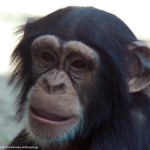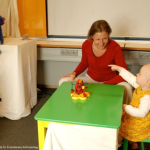Yes, there is. Though findings from what classically was termed ethology and now has differentiated into, and been complemented by, specialised fields like biocognition or social cognition have been revealing an ever increasing number of similarities (e.g., have a look at the “Raven Politics” START project led by Thomas Bugnyar at the University of Vienna – they could not contribute to the Summit, since they are occupied by events celebrating the University of Vienna’s 650th anniversary at exactly the same time), there is a fundamental dissimilarity too. This dissimilarity has to do with the kind of co-operation humans are practicing in contradistinction to the behaviour of nonhuman species.
That position is substantiated by evidence found in long years of research at the Max Planck Institute for Evolutionary Anthropology in Leipzig, Germany, directed by Michael Tomasello. Tomasello is well-known for his publications on cognition, communication and co-operation. In his most recent book “A Natural History of Human Thinking” published winter last year he sums up the research programme carried out at his Department of Developmental and Comparative Psychology. Tomasello contends the so-called “shared intentionality” hypothesis which provides an evolutionary and structural explanation of the difference of human co-operativity that yields, and presupposes, different human communicative and, as a consequence, different human cognitive capabilities as well (a hypothesis, by the way, that is in full concordance with the Triple-C Model of Wolfgang Hofkirchner’s Unified Theory of Information framework). Evidence comes from studies in Great Apes and children.


(photos: EVA)
We are glad to welcome early stage researcher and co-worker of Tomasello, Manuel Bohn. Bohn’s research is concerned with the ontogenetic and evolutionary origins of uniquely human communication.

“I’m particularly interested in the role of shared knowledge and experience as a basis of communication”, he says. “By studying great apes and human infants I hope to shed light on the similarities and differences in the cognitive and motivational architecture underlying their gestural communication.”
Bohn co-authors papers with Tomasello and Josep Call to be published soon on iconic gestures and communication about absent entities in great apes and children.
We are keen on listening to first results and learning how human co-operativity is shaping human communication.
This talk will build a bridge toward the one by Günther Witzany who extends the idea of co-operation to the whole biotic realm and to the ones by Marc Humbert and Frank Adloff as well who are concerned with co-operation in today’s societies.


